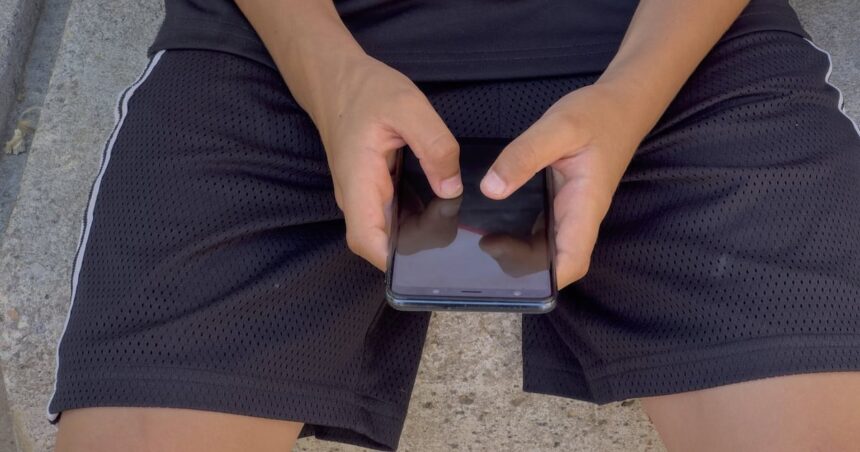In the year since provinces began introducing cellphone bans in classrooms, Canadian educators report a surprising shift: students themselves are showing signs of relief.
“My Grade 10s actually thanked me,” says Mira Sandhu, who teaches at an Ottawa high school. “One student told me she feels less anxious knowing she won’t miss anything on social media because everyone’s phones are away. The pressure’s off.”
Last June, Ontario led the charge with what Premier Doug Ford called “common-sense” restrictions on classroom phone use. Alberta, Manitoba, and British Columbia quickly followed with similar policies. The wave of provincial bans came after mounting pressure from parent groups and increasing evidence linking excessive phone use to declining mental health and academic performance.
The Canadian Teachers’ Federation reports that 68% of educators now notice improved student engagement, though implementation challenges remain. At Parkdale Collegiate in Toronto, principal James Kinoshita describes an unexpected outcome.
“We expected pushback, but what we’re seeing is a kind of collective exhale,” Kinoshita says. “Students talk to each other at lunch again. The hallways are noisier between classes – and that’s actually a good thing.”
Provincial approaches vary slightly. Ontario’s policy requires phones be powered off and stored away unless explicitly needed for learning activities or health accommodations. Alberta’s guidelines allow individual schools more flexibility in enforcement, while B.C. focused on elementary schools first before expanding restrictions to higher grades.
The policy shift represents a significant reversal from the 2010s, when many schools embraced smartphones as learning tools. Dr. Jean McNeil, education researcher at McGill University, sees this as a natural correction.
“We swung from ‘ban them completely’ to ‘integrate them fully’ and now we’re finding a healthier middle ground,” McNeil explains. “The pandemic accelerated screen dependency, and these policies acknowledge that students need boundaries.”
Parents like Winnipeg’s Carlos Menendez have noticed changes at home too. “My daughter complained for the first month,” he admits. “Now she reads actual books again. I hadn’t realized how much that had stopped.”
According to Statistics Canada, 86% of Canadian students aged 12-17 owned smartphones before the bans, with average daily use exceeding 7 hours. Recent provincial data suggests classroom attention spans have increased by approximately 22% under the new policies.
Not everyone sees the bans as progress. Digital literacy advocate Sasha Kouri worries about missed opportunities. “We’re teaching avoidance rather than responsible use,” she argues. “These students will need to manage technology in their careers. Blanket bans don’t teach discernment.”
Some teachers share these concerns. Edmonton high school teacher Jeff Burrows has adjusted his approach. “I’ve created ‘phone zones‘ in my classroom – designated times when we actively use phones for research or interactive polls, then equally defined times when they’re completely away.”
The most significant challenges have emerged in enforcement consistency. “One teacher strictly enforces it, another doesn’t bother,” says Noah Chen, a Grade 11 student in Surrey. “We know exactly which classes we can get away with texting under our desks.”
This inconsistency points to what Dr. McNeil calls “policy without adequate support” – many schools received mandates without additional resources for implementation or alternatives for the educational apps some classrooms had come to rely on.
The Canadian Association of Principals has requested additional funding for classroom tablet sets and secure phone storage solutions. “Schools with resources are handling this transition much better,” says Association President Diane Lavoie. “We need to close that gap.”
Despite implementation hurdles, preliminary academic results appear promising. Manitoba Education reports a 12% improvement in assignment completion rates in participating schools. Alberta’s data shows similar trends, with attendance improvements in schools with consistent enforcement.
Mental health professionals have cautiously welcomed the shift. Child psychologist Dr. Arvin Gill notes: “We’re seeing early indications of reduced anxiety among teens at our clinic. The constant social comparison cycle gets interrupted when phones aren’t accessible all day.”
Indigenous educators have taken a particularly nuanced approach. At Miskokiming First Nation School in northern Ontario, Elder-in-residence Thomas Beardy helped develop a policy that balances restriction with respect.
“We talk about technology as a tool, like fire – powerful when used with intention, harmful when used without care,” Beardy explains. “Our students put phones in a beautifully crafted cedar box at the classroom entrance. It’s symbolic – they’re making a choice to be fully present.”
As the bans enter their second year, Education Canada reports 72% of school administrators plan to maintain or strengthen restrictions, while 23% are exploring modifications based on feedback.
For Sandhu, the Ottawa teacher, the most meaningful change has been subtle. “Last week, I overheard students debating our history lesson during break – actually discussing what they’d learned. That kind of spontaneous intellectual curiosity? That’s what teaching is all about.”






